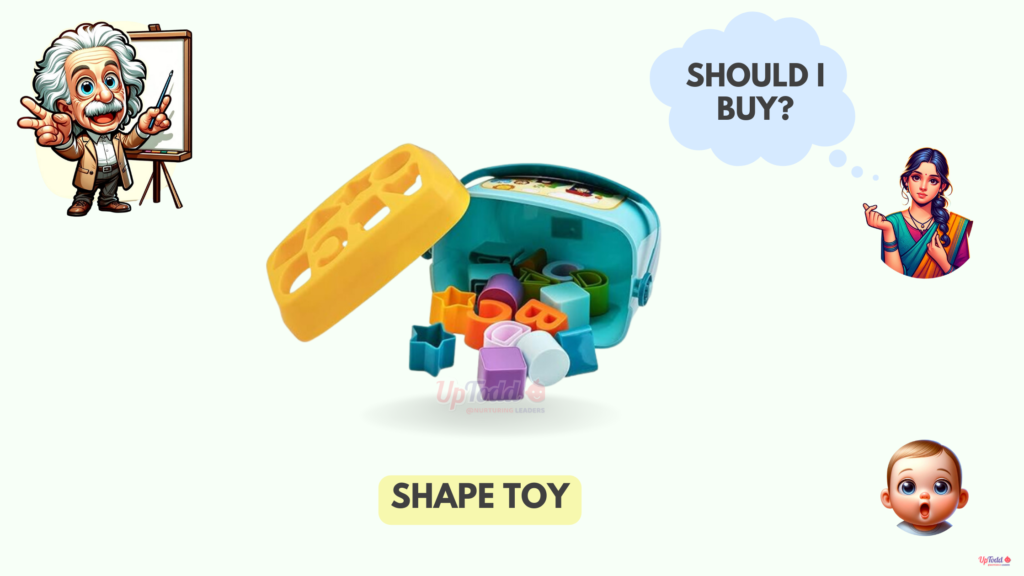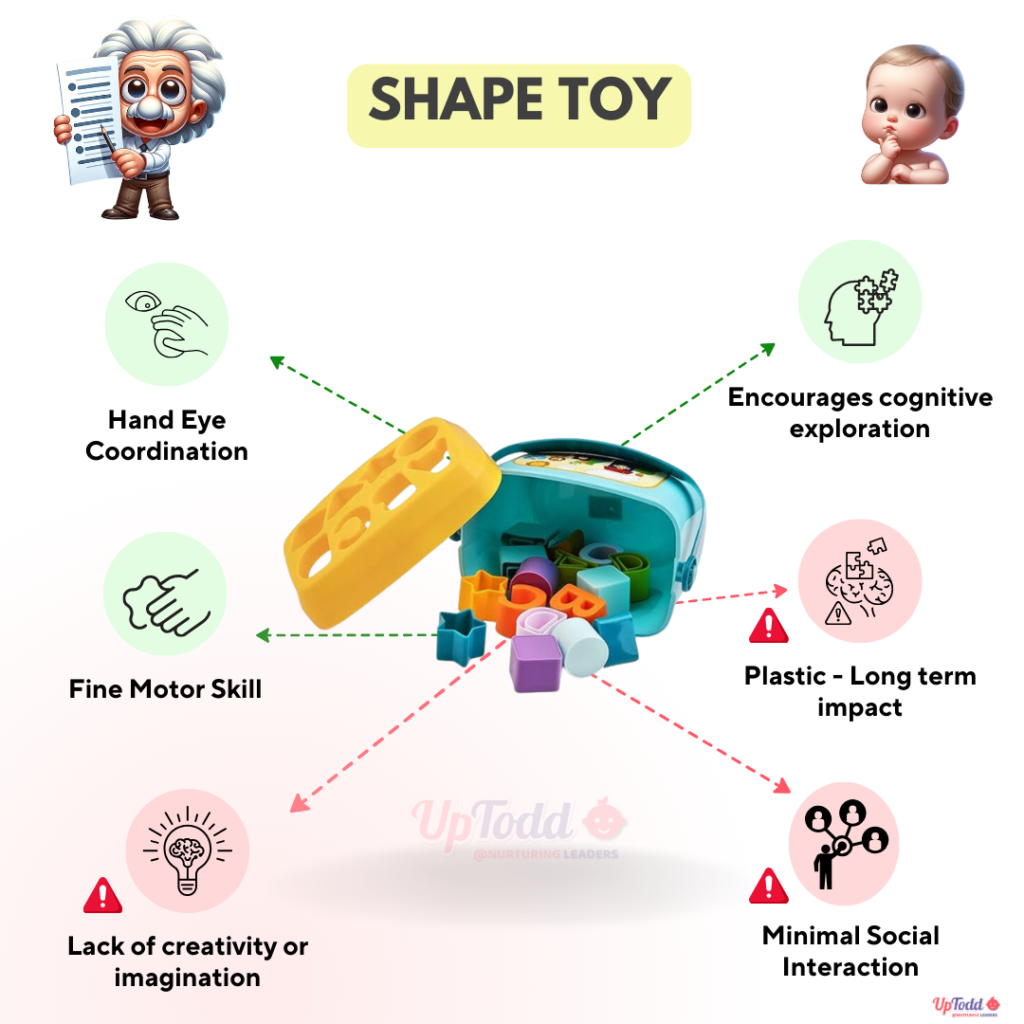
Welcome to our exploration of the Shape Toy. In this blog post, we’ll know about this classic educational toy, examining its advantages and disadvantages. Guided by the wisdom of the “Einstein Growth Guru,” we’ll uncover the benefits and potential limitations of the Shape Toy, helping you in making informed decisions about introducing it into your child’s playtime.

Pros of the Shape Toy
Hand-Eye Coordination
The Shape Toy provides an excellent opportunity for children to develop hand-eye coordination. As they manipulate the different shapes to fit into corresponding slots, they learn to coordinate their hand movements with visual cues, developing the essential motor skills.
Encourages Cognitive Exploration
With its various shapes and slots, the Shape Toy encourages cognitive exploration and problem-solving. Children engage in critical thinking as they analyze shapes, match them to corresponding holes, and experiment with different shapes to achieve success in finding the right one. This process develops cognitive development and spatial awareness in babies.
Fine Motor Skills Development
Engaging with this toy requires precise movements and manipulation of small objects, supporting the development of fine motor skills. Children practice grasping, rotating, and inserting shapes, which strengthens hand muscles and improves dexterity, essential for tasks like writing and self-care.
Cons of the Shape Toy
Plastic – Long-term Impact
One major drawback of this toy is it’s construction from plastic materials, which may have long-term environmental impacts. While plastic toys are durable and affordable, they contribute to plastic waste accumulation and may contain harmful chemicals. Plastic can also pose to be harmful for children, as they have the habit to put things in their mouth as way to explore it. Caregivers should consider alternatives made from sustainable materials to minimize environmental impact.
Lack of Creativity or Imagination
While this shape sorting toy offers opportunities for cognitive development, it may lack the open-endedness required for fostering creativity and imagination. Unlike toys with limitless possibilities for imaginative play, the structured nature of the shape sorting activity may limit creative exploration and self-expression.
Minimal Social Interaction
Shape sorting toys is typically designed for solitary play rather than social interaction. While children can still play alongside others, the toy itself may not encourage cooperative play or communication with peers, which are important social skills for development.
Age Recommendations
As per Einstein Growth Guru, the Shape Toy is recommended for children aged 12 to 36 months. Caregivers should ensure the toy meets safety standards and inspect it regularly for signs of wear or damage.
Final Thoughts by Einstein Growth Guru
FEinstein Growth Guru states, the Shape Toy offers opportunities for children to develop hand-eye coordination, cognitive exploration, & fine motor skills. Despite its benefits, caregivers should be mindful of its potential drawbacks, including environmental concerns associated with plastic construction, limitations in fostering creativity, and the risk of children outgrowing its educational value. By understanding both the pros and cons of the this toy, parents can provide enriching play experiences that support their child’s holistic development.
Thank you for joining us on this enlightening exploration. May your child’s playtime be filled with joy, learning, and endless moments of growth and discovery.
Explore UpTodd luminary pathway to unleash hidden abilities of the baby
